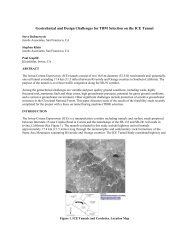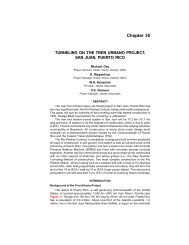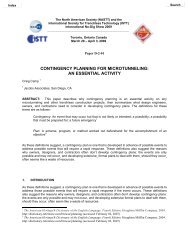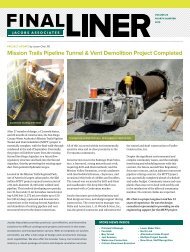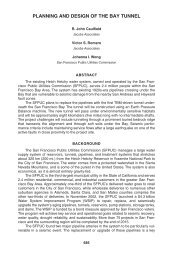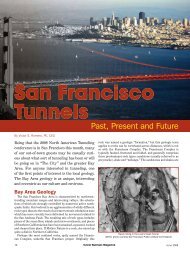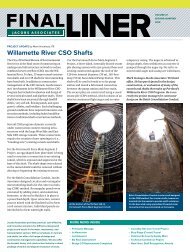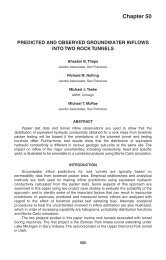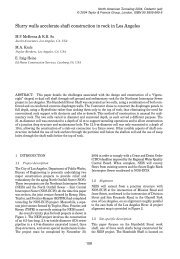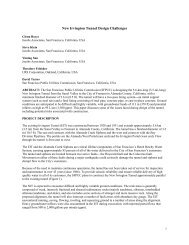Riverside Badlands Tunnel, Inland Feeder Project - Jacobs Associates
Riverside Badlands Tunnel, Inland Feeder Project - Jacobs Associates
Riverside Badlands Tunnel, Inland Feeder Project - Jacobs Associates
Create successful ePaper yourself
Turn your PDF publications into a flip-book with our unique Google optimized e-Paper software.
CHALLENGES BETWEEN CONCEPT AND COMPLETION 995<br />
Figure 1.<br />
<strong>Tunnel</strong> alignment<br />
portal to remove the TBM and place backfill around the pipe installed in the tunnel as a<br />
final lining.<br />
Design of this 3.65 m (12 ft) diameter tunnel presented many challenges that had<br />
to be addressed in order to take the project from concept to reality. These challenges<br />
included: diverse ground conditions consisting of weak sedimentary rocks; strong,<br />
fractured metamorphic rocks; and alluvium, all of which were below the groundwater<br />
table; developing a cost effective tunnel design for the wide range of ground<br />
conditions; mitigating potential construction risks; and preparing a Contract that would<br />
allow flexibility for the contractor and also fairly allocate the risk between MWD and the<br />
contractor. This paper examines how these challenges were successfully addressed<br />
during design and construction of this project.<br />
DESIGN CONSIDERATIONS<br />
Design evaluations for the project focused on a several key issues: accurately<br />
characterizing the ground and groundwater conditions; identifying appropriate tunnel<br />
excavation methods; developing initial tunnel support and final lining designs;<br />
determining requirements for portal and shaft excavations; and developing a cost<br />
effective contract package that included suitable risk management provisions. A<br />
detailed discussion of all of these topics is beyond the scope of this paper, however,<br />
some of the more critical issues are briefly discussed in the following paragraphs.<br />
Anticipated Ground Conditions<br />
Fundamental to the design approach adopted for this project was the completion of<br />
a thorough geotechnical investigation program to accurately characterize the ground<br />
conditions along the tunnel alignment. This program was described previously (see<br />
Redd et al., 1997 and DMJM/WCC, 1997). The results of these investigations indicated<br />
that three distinct geologic units would be encountered in the tunnel in the following



